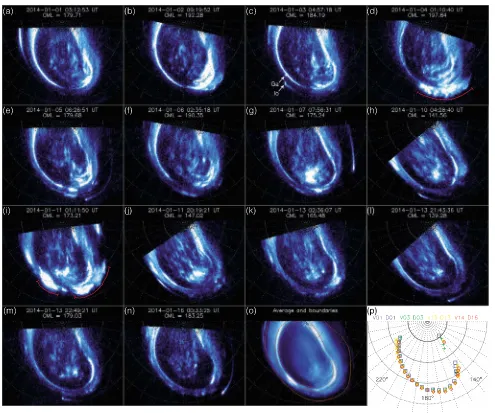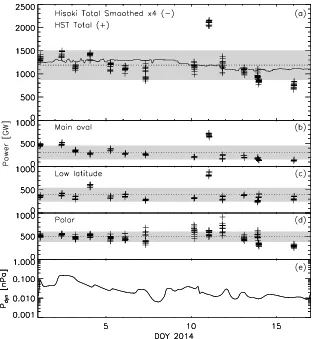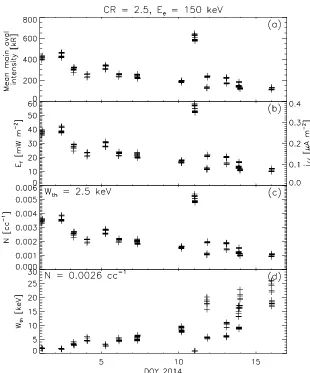Weakening of Jupiter's main auroral emission during January 2014
Full text
Figure



Related documents
ACS: Acute coronary syndrome; CETP: Cholesteryl ester transfer protein; CVD: Cardiovascular disease; HDL-C: High-density lipoprotein cholesterol; HsTnT: High-sensitivity troponin
Background: The present study was to detect the association of single nucleotide polymorphism (SNP) in the breast susceptibility gene 2 ( BRCA2 ) and the risk of coronary artery
Twenty-four hours of supplementation with vitamin D3 and vitamin E in the adipocytes stimulated with LPS significantly reduced the levels of IL-6 (88% and 60%, respectively; p
Multivariate random effects meta-analysis (MREM) In this section we consider studies where a single test is administered and the results are reported using J - 1 thresholds
Background: The aim of this study was to determine the physiological effects of an high-intensity circuit training (HICT) on several cardiovascular disease risk factors in
A higher creatinine urine concentration (>25 mg/dL) results in a higher enzymatic compared to a Jaffe assay, while the reverse is true in lower urine concentrations (<10
Methods: We performed a treadmill calibration protocol to determine cut points for moderate to vigorous PA (MVPA) ( ≥ 3 metabolic equivalents) and assessed free-living PA in 44